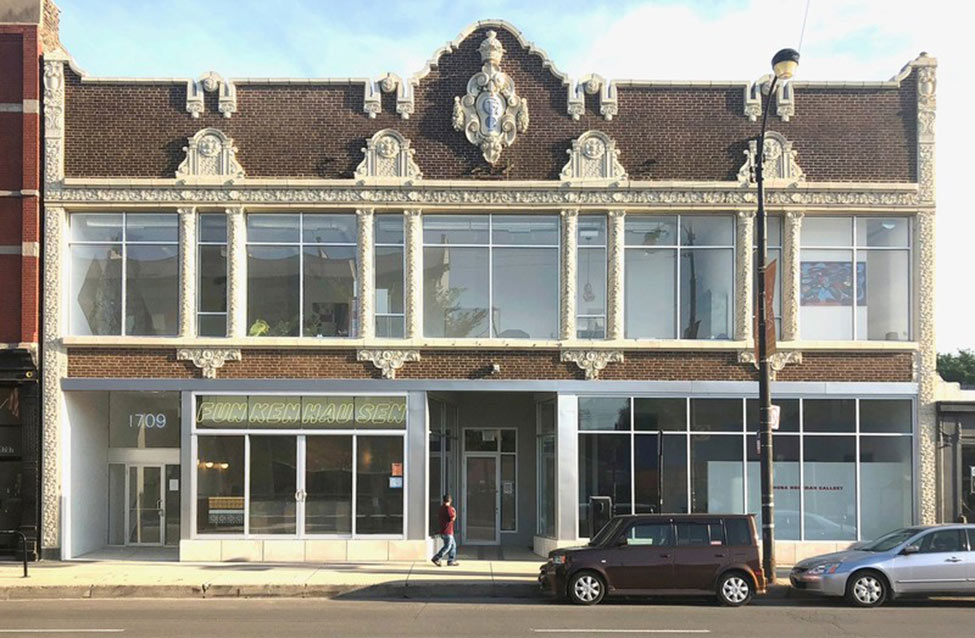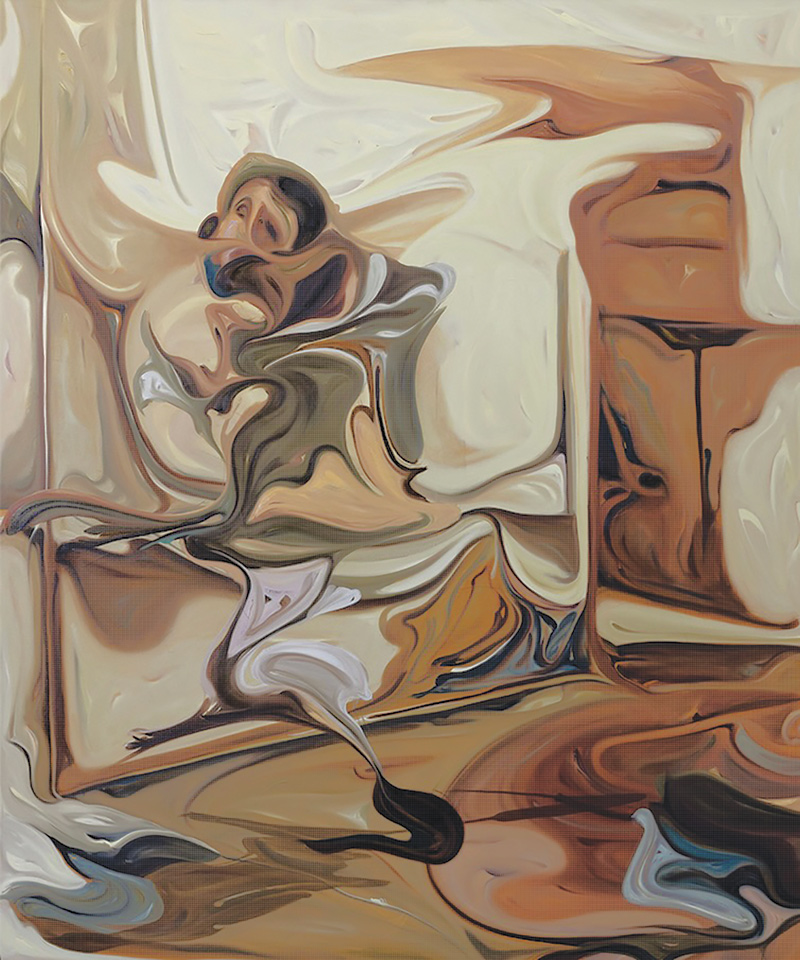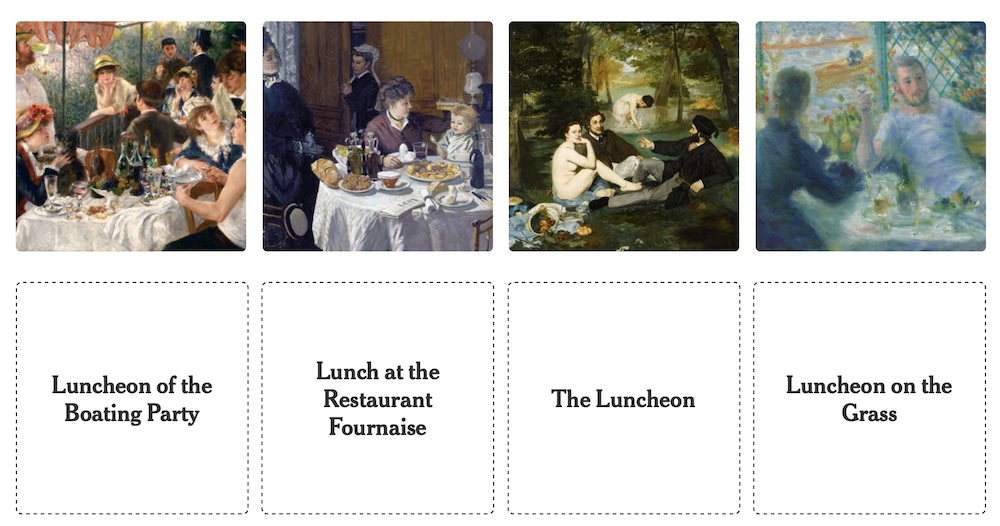A New Westward Migration: Galleries Move in Search of Space and Community


By FRANCK MERCURIO
In his poem, Carl Sandburg summed up Chicago’s rough-and-tumble reputation as a city concerned with only one thing: making a buck.
Proud to be Hog Butcher, Tool Maker, Stacker of Wheat, Player with Railroads and Freight Handler to the Nation.
But turn-of-the-19th-century Chicagoans were also involved in the commerce of art. Wealthy industrialists purchased art and encouraged artists to settle in the city, especially after the 1893 World’s Columbian Exposition had ended. Philanthropists Anne and Lambert Tree even financed the construction of Tree Studios—still thriving at Ohio and State Streets—providing artists with live/work spaces on the Near North Side. Soon after, artists, writers, and musicians congregated in the neighborhood surrounding the Water Tower, then known as Towertown.
As North Michigan Avenue developed into the commercial district we know today, the Bohemian types moved on, but artistic enterprises remained. Katharine Kuh opened her eponymous gallery inside North Michigan Avenue’s Diana Court Building, which ran successfully from 1935 until 1943, despite the economic challenges of the Great Depression.
Writing in the Encyclopedia of Chicago, MCA Curator Lynne Warren elaborates on the city’s first gallery district: “North Michigan Avenue and its immediate environs were the prime location for commercial art galleries from the 1940s until the 1980s. Pioneering spaces included Madeline Tourtelot’s Gallery Studio, Benjamin Galleries, and the Frank J. Oehlschlaeger Studio.”
Today, a few gallerists still call North Michigan Avenue home, most notably Richard Gray (though they opened Gray Warehouse, an expansive West Side outpost, in 2017). But, as time passes, neighborhoods inevitably change. When River North became revitalized in the 1970s, the heart of Chicago’s gallery scene shifted from Michigan Avenue to the intersection of Superior and Franklin, which became the new hotspot for art. Today the neighborhood supports a concentration of approximately 20 galleries, including veterans Carl Hammer and Zolla/Lieberman, one-year-old Gallery Victor Armendariz, and now a pop-up from Aron Packer Projects.
As gentrification of River North increased, a new generation of gallerists went in search of less expensive space; many found home in the West Loop, just south of Randolph Street’s restaurant row. Now, as development in that area rapidly increases, several galleries are moving on, seeking larger spaces, less expensive rents, and new audiences in West Town.
“Fifteen years ago, the West Loop was all meat packing,” said Anastasia Tinari, director of Rhona Hoffman Gallery. “Now there are cranes on either side of our [former] building; it felt prohibitive. But people already come to this neighborhood [West Town]; and with Rhona having just moved here, her gallery serves as an anchor, along with the galleries upstairs.”
Hoffman Gallery recently joined Western Exhibitions, DOCUMENT, Volume Gallery, and Paris London Hong Kong in a large commercial building at 1709 W. Chicago Avenue, making the intersection of Ashland and Chicago the new art nexus of the neighborhood.
A new restaurant coming to the same building will also draw regular crowds; Funkenhausen, touted as a big beer hall with traditional German dishes, is a project of the building’s landlord, Daniel Boyd, and chef Marc Steuer (El Che and Carraige House).
West Town isn’t new to the Chicago arts scene. A loose confederation of experimental galleries, called Uncomfortable Spaces, was located in the neighborhood in the 1990s. Corbett vs. Dempsey has also been a dynamic presence here since 2004. But recent events have made West Town a magnet for even more galleries.
“The West Loop is getting too dense,” said Scott Speh, owner and director of Western Exhibitions. “The landlord of our old space offered this building [1709]; it seemed like the best solution after looking for a year or more. We [the gallery owners] all live nearby and wanted to be on the western fringes of the West Loop.”

Hoffman has been in the gallery business for over 40 years, and in that time she has run six different spaces. Her philosophy is practical, keeping the needs of the customer in mind. “If you want to see galleries in Chicago, you have to spend a day getting everywhere,” she says, “So you need to have some kind of a center.”
Just up the street at 864 N. Ashland, Jefferson Godard relocated his gallery, Aspect/Ratio, from the West Loop in 2017. Aspect/Ratio had been operating at 119 N. Peoria, directly across the street from Hoffman’s previous space, for several years. Known for cutting-edge video installations, Godard’s 3rd floor West Loop gallery had no street visibility. The new space has large windows looking onto Ashland Avenue and a 1,000-square-foot floor plan, nearly five times the size of the old gallery.
“We decided to move to a better, more prominent location,” said Godard. “West Town/Ukrainian Village offered us a great space and community.”
The community is growing as other gallerists relocate near the intersection of Chicago and Ashland Avenues, including Mongerson Gallery, Mickey Pomfrey (of Courtney Blades Gallery) and Monique Meloche Gallery.
Architect Dirk Denison is designing Meloche’s new space in an expanded location in West Town. The gallery opens June 9 with a solo exhibition of Jeff Sonhouse’s works.
“We’ve been looking for a couple of years to move, and we’ve always liked being on the west side in Wicker Park/Bucktown,” said Meloche. “So it was natural to keep looking in the same general area. My gallery has always been a destination, but we are happy to soon be within walking distance of some of our colleagues.”

“Like everything else, things change,” said Speh of Western Exhibitions. “Whenever I see articles about changing gallery districts, and bemoaning that, well this is historical. Every 10 to 15 years, things shift.”
With ample street parking and multiple public transportation options, West Town has become a convenient and appealing art outpost. And with new restaurants and amenities continuing to move to the neighborhood, Chicago’s newest gallery district is becoming a destination to spend an afternoon or evening enjoying a meal and viewing art.
West Town AREA Galleries:
West Town’s general boundaries are considered Bloomingdale to Kinzie; the Chicago River to Kedzie. Neighborhoods within West Town also include: East Village, Humboldt Park, Kinzie Industrial Corridor, Noble Square, Smith Park, Ukrainian Village, and Wicker Park and nearby River West.
For the purpose of identifying this new gallery center, we consider the West Town-ish arts boundaries to be between Augusta and Lake and the River to Western
The list below is current as of May 2018.
Aspect/Ratio: 864 N. Ashland
Chicago Artists Coalition: 2130 W. Fulton
Chicago Truborn: 1741 W. Chicago
Corbett vs. Dempsey: 1120 N. Ashland
CourtneyBlades: 1635 W. Grand
DOCUMENT: 1709 W. Chicago
Richard Gray Warehouse: 2044 W. Carroll
Rhona Hoffman Gallery: 1711 W. Chicago
Intuit: The Center for Intuitive and Outsider Art: 756 N. Milwaukee
Johalla Projects: 1821 W. Hubbard
THE MISSION: 1431 W. Chicago
Mongerson Gallery: 2251 W. Grand
monique meloche: 451 N. Paulina
Paris London Hong Kong: 1709 W. Chicago
PATRON Gallery: 673 N. Milwaukee
Matthew Rachman Gallery: 1659 W. Chicago
Regards: 2216 w. Chicago
Roots & Culture: 1034 N. Milwaukee
Spudnik Press: 1821 W. Hubbard
Linc Thelen Galleries: 1620 W. CARROLL
Ukrainian Institute of Modern Art (UIMA): 2320 W. Chicago
Volume: 1709 W. Chicago
Western Exhibitions: 1709 W. Chicago
Top image: The 1709–1711 W. Chicago Ave. building once housed a factory. Today it is home to several galleries that have moved from the West Loop.






